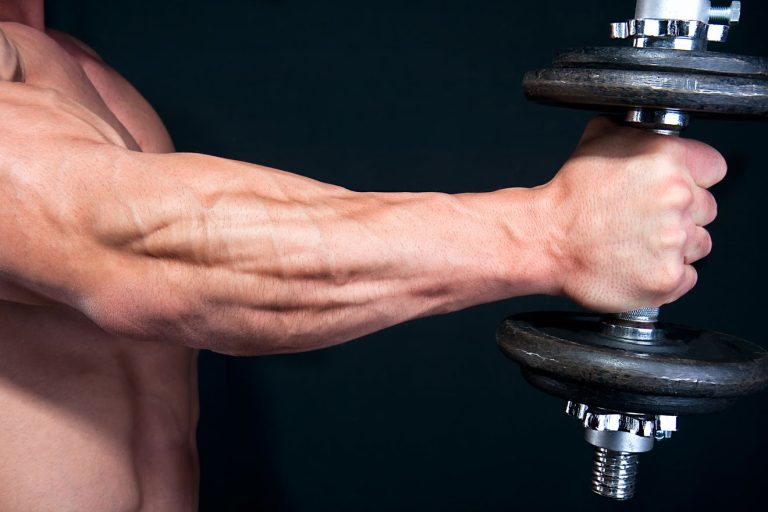HIIT: lose fat even after your workout
Key takeaways
- High-Intensity Interval Training (HIIT) causes an afterburn effect after your workout. An afterburn is when your body continues to burn calories, even after your workout, as it recovers.
- There are many benefits to HIIT: afterburn effect, improved insulin sensitivity and time-efficiency.
- Try out HIIT after consulting with a medical professional.
HIIT 101
High-intensity interval training (HIIT) has rapidly gained popularity as one of the most effective ways to burn fat, improve cardiovascular health, and increase endurance. Unlike traditional steady-state cardio, HIIT alternates between periods of intense effort and short recovery, pushing your body to its limits and creating what is known as the “afterburn effect” which accelerates fat loss long after the workout is over.
In this article, we will explore the secrets behind HIIT that can double your cardio results, its benefits, and how to incorporate HIIT into your fitness routine for maximum fat-burning potential.
What makes HIIT so effective for fat loss?
The key to HIIT’s fat-torching power lies in its intensity and structure. When you perform short bursts of high-effort exercise, your body relies on anaerobic pathways (which burn stored glycogen) for energy. In order to recover from the workout, your body enters a metabolic state known as excess post-exercise oxygen consumption (EPOC). In layman’s terms, this is often referred to as the “afterburn effect.”
Afterburn effect and fat loss
The afterburn effect occurs when your body continues to burn calories even after you’ve finished your workout. This happens because your metabolism remains elevated for hours as your body works to restore oxygen levels, repair muscle tissue, and remove metabolic byproducts from the intense exertion. The higher your intensity during the workout, the greater the afterburn, and therefore, the more fat you’ll burn.
In comparison, a steady-state training program, such as jogging at a constant pace, primarily burns calories during the activity itself. While effective for cardiovascular endurance, it doesn’t have the same prolonged fat-burning benefits that HIIT offers.
The Science Behind HIIT’s Effectiveness
1. Boosts metabolism
The high intensity nature of HIIT activates the fast twitch fibers in your muscles which increases your muscle size and strength. This boosts your metabolism since bigger muscles will burn more calories.
2. Improved insulin sensitivity
Because HIIT is an anaerobic exercise, your body will use stored glycogen (a form of sugar) as an energy source instead of oxygen. This lowers blood sugar levels and helps with insulin absorption. This is particularly important for individuals with metabolic conditions such as prediabetes or insulin resistance.
3. Time efficiency and maximum results
One of the most appealing aspects of HIIT is that it delivers maximum results in a fraction of the time compared to traditional cardio workouts. A typical HIIT session lasts 20 to 30 minutes, yet burns as many calories—or even more—than a longer steady-state workout. This time efficiency makes HIIT an excellent choice for those with busy schedules who still want to maximize fat loss and fitness gains.
How to structure a HIIT workout for maximum fat loss
Creating an effective HIIT workout involves alternating between periods of intense effort and recovery. The duration of work-to-rest ratios can vary depending on your fitness level and the specific goals you’re aiming for, but a common structure is the 1:1 or 2:1 ratio.
For beginners, a 30-second sprint followed by a 30-second recovery period is an excellent starting point. For those who are more advanced, 40 seconds of maximum effort followed by 20 seconds of rest (known as Tabata-style) can ramp up intensity and fat loss. Regardless of the structure, the goal is to push yourself to near-maximum capacity during the effort phase.
Choosing the right HIIT exercises
The best part about HIIT is its versatility. You can perform HIIT using a wide range of exercises, including bodyweight movements, cycling, running, or using equipment like kettlebells or battle ropes. Here are a few effective exercises to include in your HIIT routine:
- Sprints: running or cycling sprints are highly effective at elevating heart rate and promoting fat loss. Whether you’re on a treadmill, an outdoor track, or a stationary bike, sprinting at full capacity for short bursts is a cornerstone of HIIT.
- Burpees: this full-body movement engages multiple muscle groups while driving up your heart rate. The combination of jumping, push-ups, and squatting makes burpees a calorie-torching powerhouse.
- Jump squats: adding a plyometric element to traditional squats helps build explosive power while increasing fat-burning potential. The jump element activates fast-twitch muscle fibers and improves athleticism.
- Mountain climbers: this dynamic core movement also improves cardiovascular endurance. By alternating knee drives while in a plank position, mountain climbers engage your abs, legs, and shoulders, making it an excellent full-body HIIT option.
Maximizing your HIIT results
Consistency and progression
To truly double your cardio results, consistency is key. While HIIT workouts can be more demanding than steady-state cardio, committing to at least 2 to 3 HIIT sessions per week can significantly boost your fat-burning potential. Over time, as your fitness improves, gradually increase the intensity, duration, or complexity of your workouts. Progression ensures that your body is continually challenged, preventing plateaus and promoting ongoing results.
Incorporate active recovery
While the intense nature of HIIT makes it highly effective, it’s essential to balance it with proper recovery. Active recovery days, which involve lighter activities such as walking, yoga, or stretching, allow your body to repair and rejuvenate. This ensures that you’re ready to hit your next HIIT session with maximum energy and effort. Make sure to also get enough rest and sleep.
Fuel your body for performance
The effectiveness of HIIT can be amplified with proper nutrition. Prioritize balanced meals rich in protein, healthy fats, and complex carbohydrates. Protein supports muscle repair and growth, while carbohydrates fuel your high-intensity efforts. Additionally, staying hydrated before, during, and after your workout will prevent fatigue and aid in recovery.
Adjust to your fitness level
HIIT can be adapted for almost anyone, but it’s essential to consider your fitness level and any potential limitations. Beginners may start with shorter intervals and gradually build up to longer, more intense sessions. If you have cardiovascular conditions, joint issues, or other health concerns, consult with a fitness professional or medical provider to ensure that HIIT is appropriate for you.
Should you use HIIT?
For those seeking fat loss, improved cardio performance, or even a more time-efficient workout routine, HIIT is a game-changer. When performed correctly, it offers a range of health benefits while delivering fast results in a shorter period.
HIIT is a method for torching fat fast while improving overall cardiovascular fitness. By incorporating short, intense bursts of activity followed by recovery, you can stimulate your metabolism, promote fat loss, and double the efficiency of your cardio efforts. Whether you’re looking to lose weight, build endurance, or improve your body composition, HIIT provides a versatile and effective solution.
Remember, consistency and intensity are key. Start by integrating HIIT into your workout routine 2 to 3 times per week, and over time, increase the challenge as your fitness improves. With the right approach and dedication, you can experience the incredible fat-burning benefits HIIT has to offer.
Written with the assistance of AI. Reviewed and edited by Marielle Livelo.







